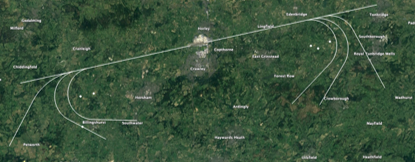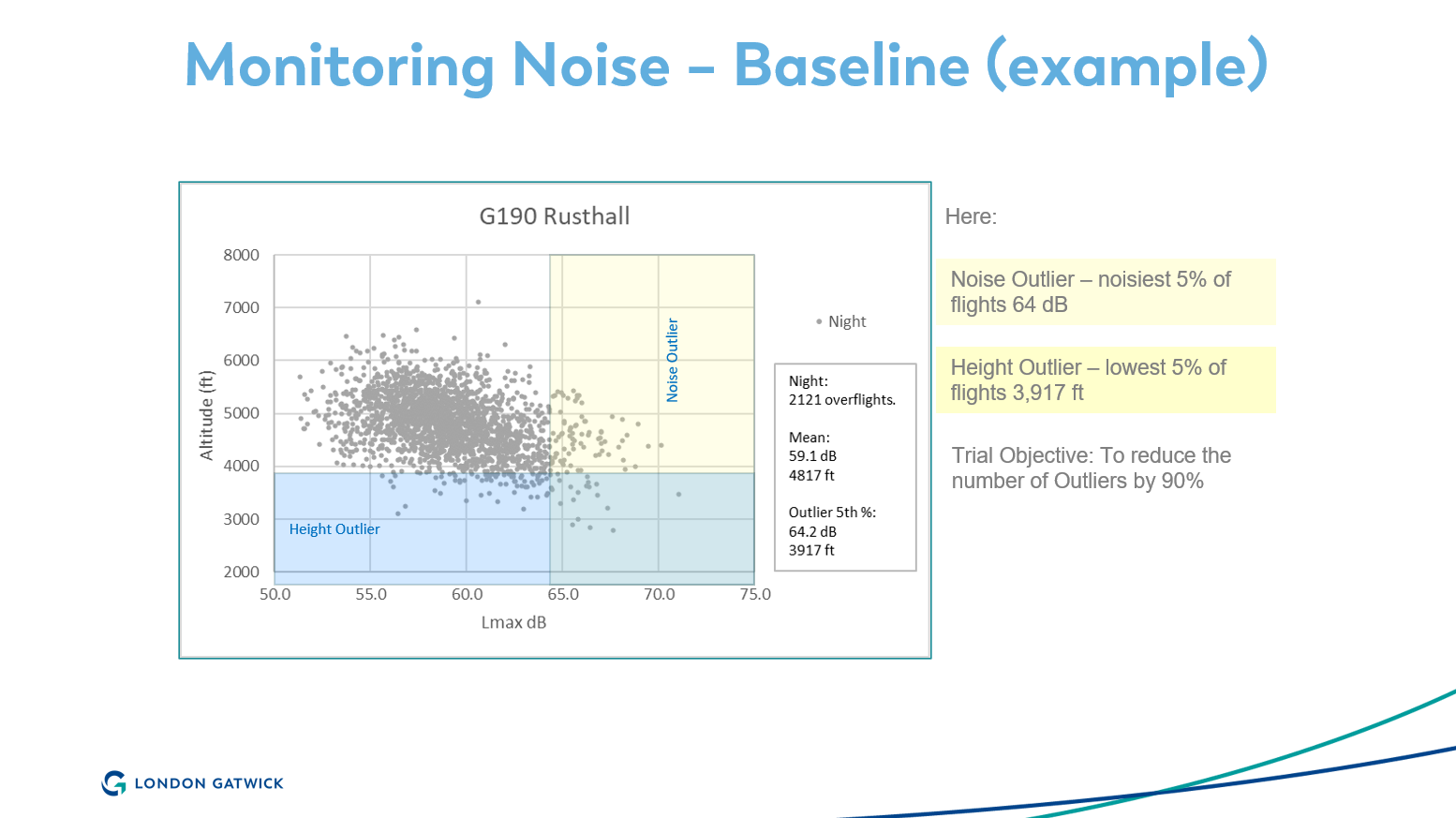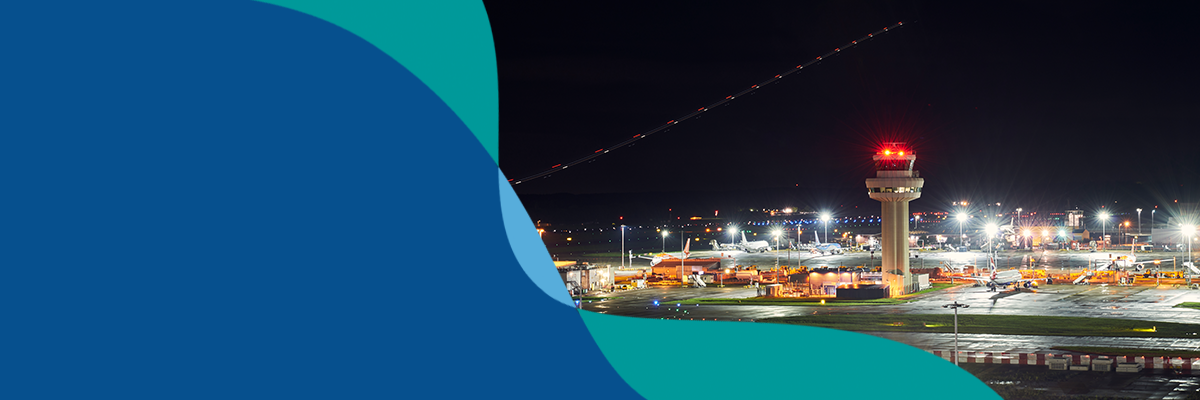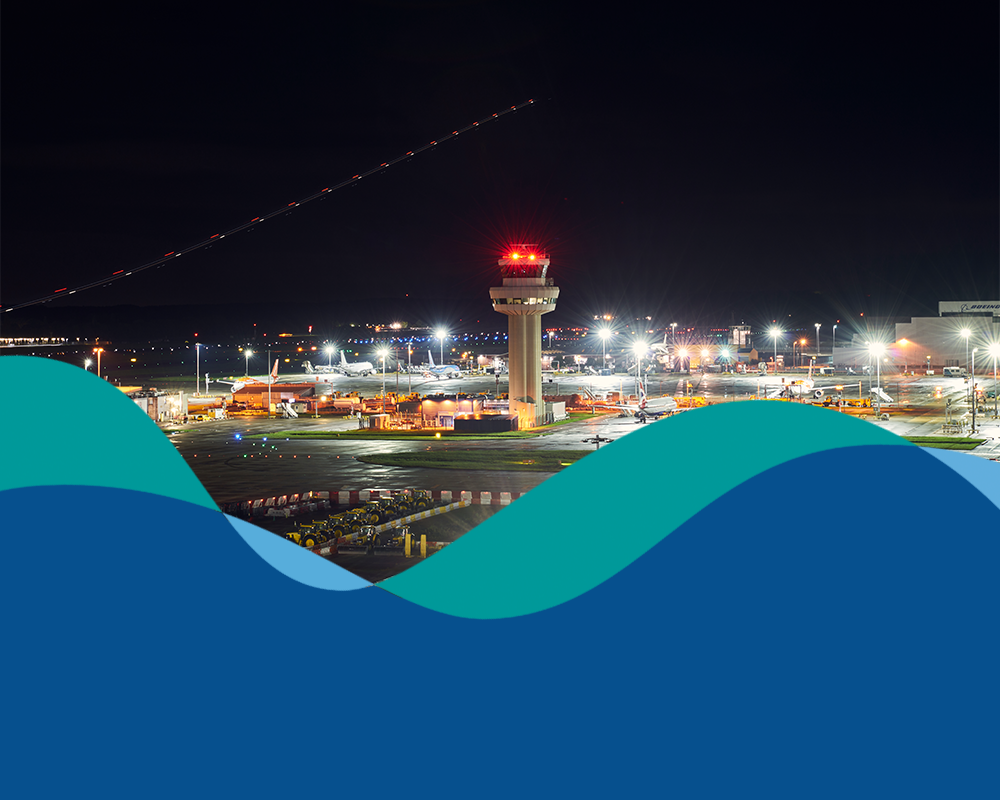Sometimes arriving aircraft fly lower and make noticeably more noise than other similar aircraft.
To try and reduce the number of these lower flying noisier aircraft. we started a six month Reduced Night Noise (RNN) trial in January. This is the first trial of its type in the UK.
The aim of the trial is to see whether modern aircraft navigation procedures can be used to reduce noise by both keeping aircraft higher for longer and by reducing engine thrust.
This trial will not enable any more aircraft to fly at night than are currently allowed and nobody will be newly overflown. On average, around four aircraft are likely to participate in the trial each night.
NATS and our airline partners are supporting the trial.
Trial Data Analysis (11 - 25 January 2024)
Trial Data Analysis (26 January - 22 February 2024)
Trial Data Analysis (23 February - 21 March 2024)
Trial Data Analysis (22 March - 18 April 2024)
Trial Data Analysis (19 April - 16 May 2024)
Trial Data Analysis (17 May - 13 June 2024)
Trial Data Analysis (14 June - 11 July 2024)
-
![]() Demonstrate the noise benefits of arriving aircraft flying procedures designed using Performance Based Navigation (PBN) standards, and any impact through a 6-month trial
Demonstrate the noise benefits of arriving aircraft flying procedures designed using Performance Based Navigation (PBN) standards, and any impact through a 6-month trial
![]() Demonstrate that PBN can reduce the peak noise levels generated per arrival per aircraft type
Demonstrate that PBN can reduce the peak noise levels generated per arrival per aircraft type![]() Compare the 'with PBN' and 'without PBN' noise condition by placing PBN routes inside the existing arrival flight pattern swathes.
Compare the 'with PBN' and 'without PBN' noise condition by placing PBN routes inside the existing arrival flight pattern swathes.![]() Inform future airspace design and gather operational data on PBN
Inform future airspace design and gather operational data on PBN
-
![]() Arrivals only
Arrivals only ![]() Operational between 01:30 - 05:00 (local time)
Operational between 01:30 - 05:00 (local time)![]() Both easterly and westerly operations
Both easterly and westerly operations![]() Only aircraft arriving on the main runway - using the Instrument Landing System (ILS)
Only aircraft arriving on the main runway - using the Instrument Landing System (ILS)![]() Data will be captured by noise monitors, before and during the trial
Data will be captured by noise monitors, before and during the trial![]() CAA's regulatory process for trials has been followed throughout
CAA's regulatory process for trials has been followed throughout
-
![]() We will produce a monthly analysis of data on the performance of aircraft
We will produce a monthly analysis of data on the performance of aircraft ![]() Monthly report will be submitted to the CAA and published
Monthly report will be submitted to the CAA and published![]() Once an initial sample of data has been analysed, the trial will be suspended if it is found there are safety concerns or if the objectives are unlikely to be met
Once an initial sample of data has been analysed, the trial will be suspended if it is found there are safety concerns or if the objectives are unlikely to be met![]() If any safety concerns are raised by operational staff, the trial will be suspended to evaluate these concerns
If any safety concerns are raised by operational staff, the trial will be suspended to evaluate these concerns![]() NATS will provide feedback on which aircraft flew in the trial
NATS will provide feedback on which aircraft flew in the trial![]() Note, not all aircraft will fly the trial routes each night
Note, not all aircraft will fly the trial routes each night![]() A report will be produced at the end of the trial
A report will be produced at the end of the trial
There are eight trial routes onto the Main Runway.
Trial routes are placed over the currently overflown areas and spaced from each other.



Will RNN lead to a concentration of flights?
PBN allows aircraft to fly accurate routes. When used for arrivals, PBN can allow the aircraft to be controlled so it descends more slowly, and in a quieter and more efficient way.
PBN routes are associated with more concentrated flight paths because the technology is more accurate than current approach procedures. To minimise the impacts of this, multiple trial routes have been designed to ensure the distribution of noise. The routes are all placed within existing arrival swathes.
There will be 16 published PBN arrival routes. This will allow for four arrival routes to each runway end (westerly and easterly) and both runways (southern and northern). For further information on Gatwick’s aircraft operations, please visit our noise portal.
Why didn't you take the opportunity to try new routes away from the existing ones?
At night, aircraft join the Gatwick Instrument Landing System (ILS) no closer than 10 nautical miles from touchdown. This is specified by the DfT. Some residents have asked why the trial doesn’t try a different ILS joining point to move aircraft away from Tunbridge Wells on westerly approaches.
The RNN trial is about reducing the number of ‘outlier’ noise events by increasing aircraft altitude within the existing swathe of arrivals traffic so that they make less noise on the ground. If the trial overflies new areas, we will not be able to validate the ‘before’ and ‘after’ effect of the routes.
Changes to routes or the night-time joining point would also require Gatwick to develop a full Airspace Change Proposal as set out in the CAA document CAP1616.
See here for further information on Gatwick’s aircraft operations.
Why can't the benefits of PBN be assessed through computer simulation?
Noise models can be used to predict the noise impact of aircraft. However, these are not considered accurate beyond about 12 NM (Nautical Miles, around 22 km) from an aircraft’s touchdown. The trial procedures are expected to have a positive noise impact in the region of 10-20 NM from touchdown, which is beyond this range.
The trial will allow data to be recorded on mobile noise monitors placed around the airport, and up to around 18 NM away from the airport. Noise from aircraft before and during the trial will be recorded and analysed.
Why is the trial taking place at night?
Airline and Air Traffic Control (ATC) procedures are best trialled when the airport is less busy. Traffic volumes are low at night, making the procedure easier to manage. Ambient noise is also reduced, which allows the noise from quieter aircraft to be measured further away from the airport.
The trial will not identify routes for use in future airspace design. It also won't be used to provide evidence for a revised night flight regime.
Under what circumstances will the trial be suspended?
The trial may be suspended for operational reasons. These include unexpectedly high levels of traffic or the need for weather avoidance. In this case, ATC will revert to their usual procedures.
The trial may also be suspended if the analysis of initial results suggests it might not have achieved the benefits expected.
Who approves the trial?
The trial will be approved by the CAA. It is being prepared according to the CAA requirements for trials described in CAP1616.
How have stakeholders been engaged?
Gatwick has engaged with representatives of industry and local communities from the NMB, Gatwick Airport Consultative Committee, Flight Operations & Performance Safety Committee and NATMAG while developing the trial. This will continue throughout the trial.
How can I complain during the trial?
Complaints can be made online, by a mobile app, by phone or by post throughout the trial period. Any noise complaints submitted directly to the CAA through its Airspace Change Portal will be redirected by the CAA to GAL for review.
There will be no limit to the number of complaints and enquiries that can be submitted by an individual or an organisation during the trial period. All complaints and enquiries will be handled in accordance with GAL’s complaints handling policy.
We will continue to update these groups as to the progress of the trial, as well as publishing information on our website.
What will happen after the trial?
Aircraft will go back to flying their current arrival routes. The evidence from the trial will be examined and outcomes will be reported to the industry and community.
The trial will not be used to identify new routes for future airspace design or increase capacity. Nor will the trial be used to introduce airspace change without consultation.

